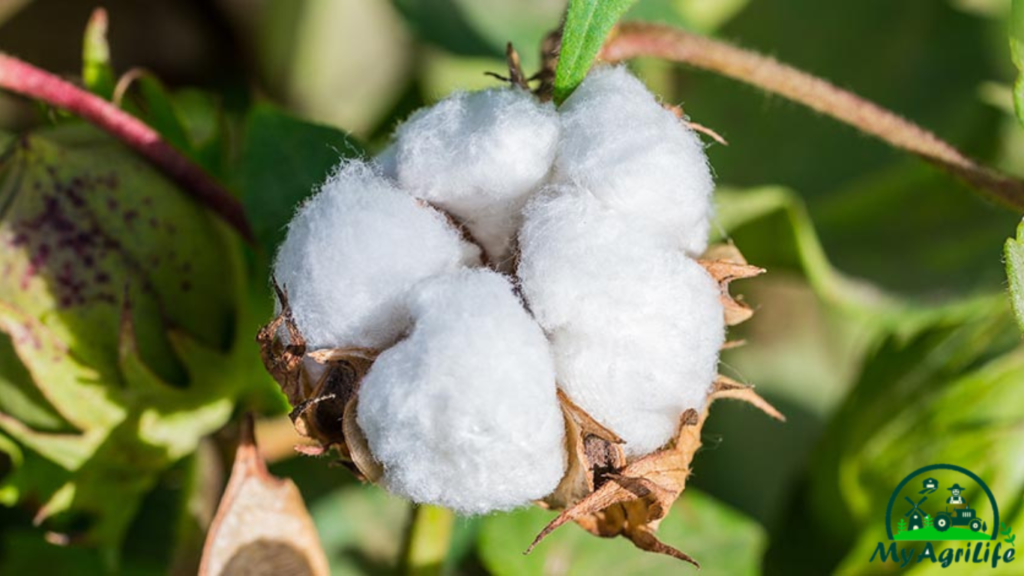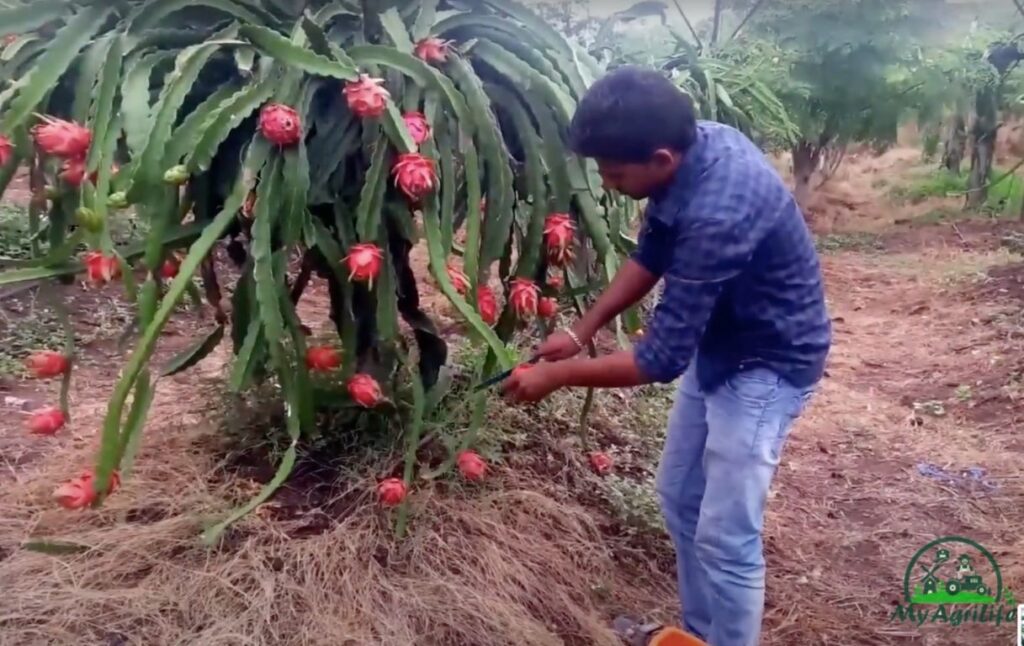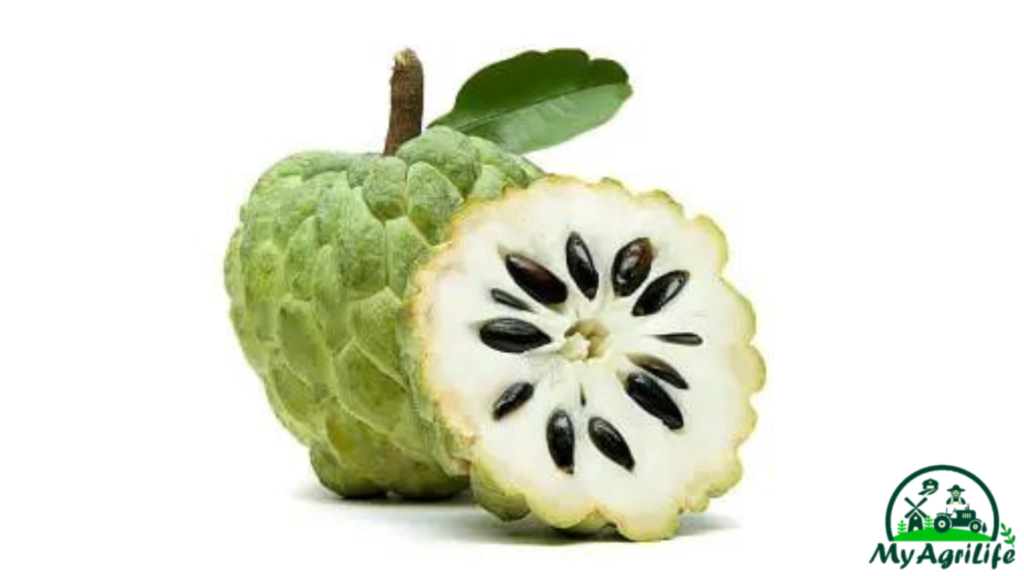
Custard apple, also known as sitaphal in Hindi, is a tropical fruit that is popular in many parts of the world. It is the fruit of the custard apple tree, which is native to Central America and South America. The fruit is round or heart-shaped, with a bumpy green skin that is hard to the touch. Inside the fruit, there are creamy white flesh and black seeds that are not edible.
Custard apples have a sweet, creamy taste that is often compared to a combination of banana, pineapple, and strawberry. They are rich in vitamins and minerals, such as vitamin C, vitamin B6, potassium, and magnesium. They are also a good source of fiber.
Custard apples are commonly eaten as a dessert fruit, either on their own or in dishes such as ice cream, sorbet, and smoothies. They can also be used in baking, such as custard apple pies and cakes. In traditional Indian medicine, custard apple is believed to have medicinal properties and is used to treat various ailments such as diarrhea, dysentery, and fever.
When selecting a custard apple, choose one that is slightly soft to the touch, as this indicates ripeness. To eat, cut the fruit in half and scoop out the flesh with a spoon, being careful to remove the black seeds.
Seed Specification Custard Apple
Custard apple seeds are small and black, and they are not edible. The seeds are surrounded by a soft, white, fibrous membrane that is also not edible. The seeds are usually about 1 cm long and 0.5 cm wide.
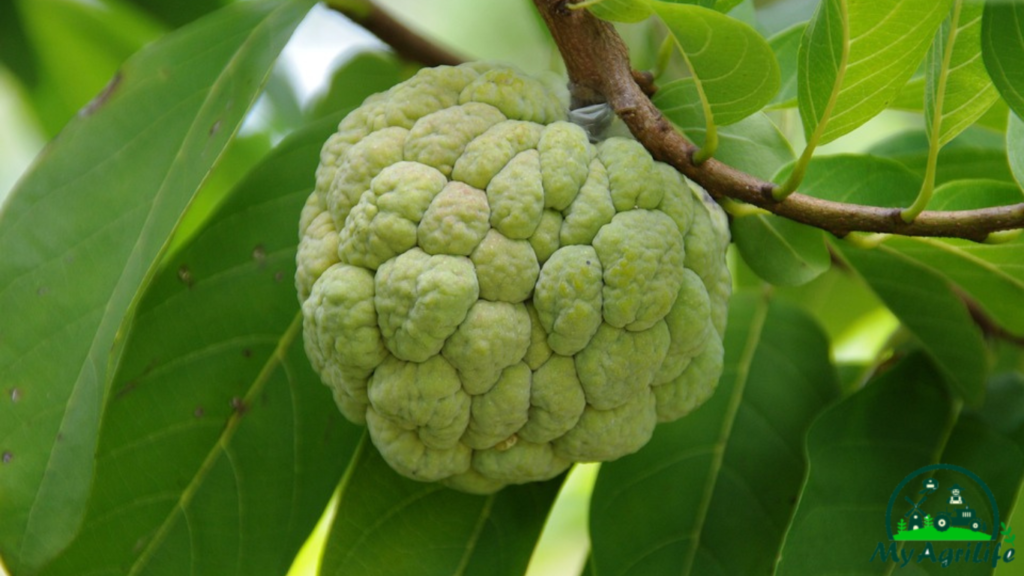
Custard apple seeds can be used for propagation, which is the process of growing new custard apple trees. To do this, the seeds should be collected from ripe fruits, cleaned, and then planted in a suitable growing medium, such as a potting mix or soil.
It is important to note that custard apple seeds have a low germination rate and may take several months to sprout. Therefore, it is recommended to plant multiple seeds to increase the chances of success. It is also possible to propagate custard apple trees through cuttings or grafting, which may be a more reliable and efficient method.
It is important to remember that custard apple trees are tropical plants and require warm temperatures and high humidity to grow well. They also need well-drained soil and regular watering. With proper care, custard apple trees can produce fruit for many years.
Land Preparation & Soil Health Custard Apple
Land preparation and soil health are crucial factors for growing healthy custard apple trees and producing high-quality fruit. Here are some important considerations:
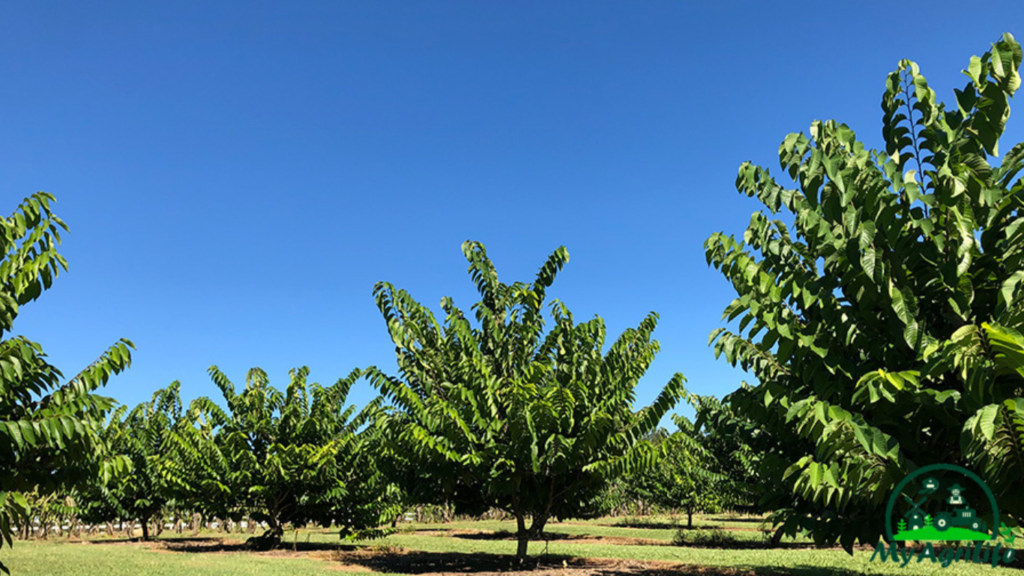
1.Site selection: Choose a site with good sunlight exposure, good drainage, and protection from strong winds. Custard apple trees prefer well-drained, fertile soil with a pH between 6.0 and 7.0.
2.Soil testing: Before planting, it is recommended to test the soil to determine its nutrient content and pH level. Based on the test results, you can add any necessary amendments to ensure optimal soil health.
3.Soil preparation: Prepare the soil by removing any rocks, weeds, or debris, and loosening the soil to a depth of about 30-40 cm. Add organic matter such as compost, well-rotted manure, or leaf litter to improve soil structure and fertility.
4.Fertilization: Custard apple trees require regular fertilization to maintain optimal growth and fruit production. Apply a balanced fertilizer (such as a 10-10-10 or 14-14-14) every 3-4 months during the growing season, starting from the second year after planting.
5.Irrigation: Custard apple trees require regular watering, especially during the dry season. Irrigate deeply and regularly, but avoid waterlogging as it can lead to root rot.
6.Mulching: Mulch the base of the trees with organic matter such as straw or wood chips to help retain moisture, suppress weed growth, and add nutrients to the soil.
7.Pest and disease management: Custard apple trees can be susceptible to pests and diseases such as fruit flies, mites, and fungal infections. Regular monitoring and appropriate treatment with organic or chemical pesticides can help manage these issues.
By following these guidelines, you can create an optimal environment for growing healthy custard apple trees with high-quality fruit.
Crop Spray & Fertilizer Specification Custard Apple
Crop sprays and fertilizers are essential for maintaining the health and productivity of custard apple trees. Here are some recommendations for crop spray and fertilizer specifications for custard apple:
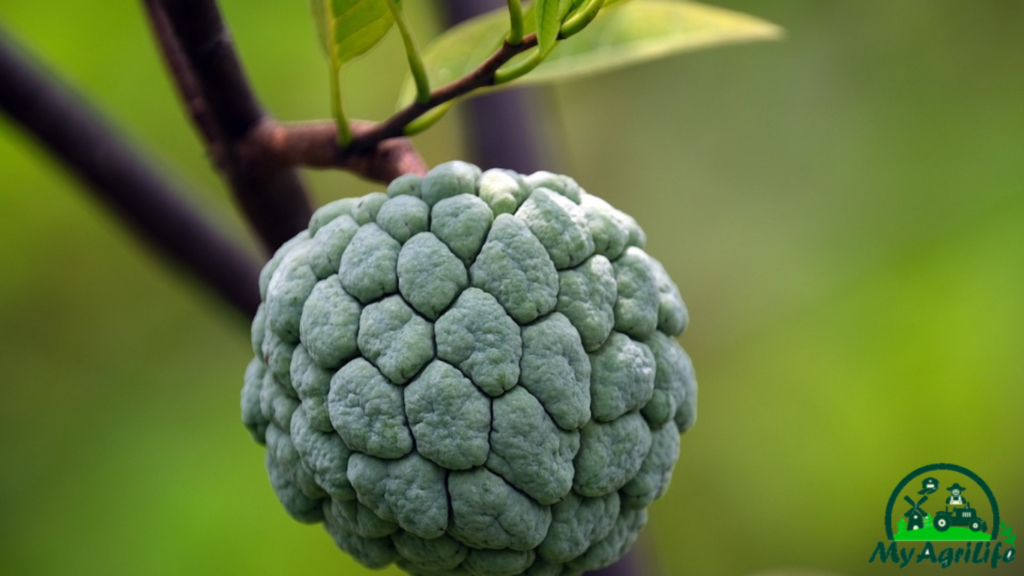
Crop spray:
1. Pest control: Custard apple trees can be affected by various pests such as fruit flies, mites, and scale insects. Spraying with a neem oil-based pesticide, such as Azadirachtin, can be effective in controlling these pests.
2. Disease control: Custard apple trees can be susceptible to fungal infections, such as anthracnose and powdery mildew. Spraying with a copper-based fungicide can help prevent and control these diseases.
3. Nutrient spray: Foliar application of nutrients can help correct deficiencies and improve fruit quality. A foliar spray of seaweed extract or fish emulsion can provide trace elements and growth stimulants to the trees.
Fertilizer:
1. Nitrogen (N): Nitrogen is essential for leaf growth and overall plant health. Apply nitrogen fertilizer during the growing season to promote vegetative growth.
2. Phosphorus (P): Phosphorus is essential for root development and fruit production. Apply phosphorus fertilizer before flowering to promote flower and fruit development.
3. Potassium (K): Potassium is important for fruit quality and disease resistance. Apply potassium fertilizer during the fruiting season to improve fruit size and flavor.
4. Micronutrients: Custard apple trees require trace elements such as iron, zinc, and manganese for optimal growth and development. Apply a balanced micronutrient fertilizer to ensure all essential elements are available to the trees.
It is important to follow the recommended application rates and timings for crop spray and fertilizer to avoid overuse and potential damage to the trees. Consulting with a local horticulturist or agriculture specialist can provide specific guidance for your particular region and growing conditions.
Weeding & Irrigation Custard Apple
Weeding and irrigation are important aspects of custard apple cultivation. Here are some recommendations:
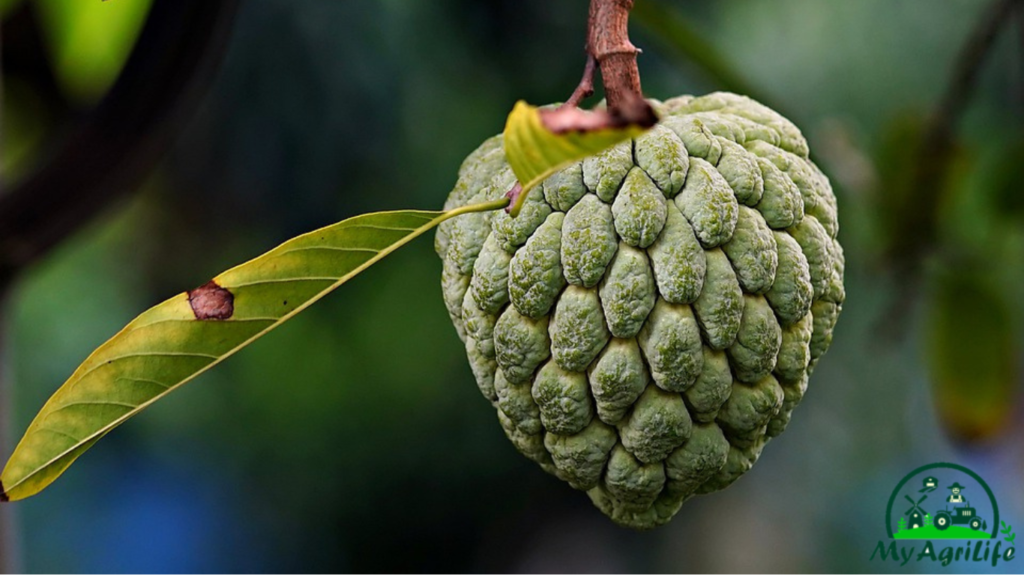
Weeding:
1. Hand weeding: Regular hand weeding can help remove any unwanted weeds and prevent them from competing with the custard apple trees for nutrients and water.
2. Mulching: Mulching the base of the trees with organic matter such as straw or wood chips can help suppress weed growth and retain moisture in the soil.
3. Herbicides: If necessary, herbicides can be used to control weeds. However, it is important to carefully follow the instructions and safety guidelines when using herbicides.
Irrigation:
1. Watering: Custard apple trees require regular watering to ensure healthy growth and fruit production. Water deeply and regularly, especially during the dry season.
2. Drip irrigation: Drip irrigation is an efficient way to deliver water directly to the root zone of the trees, reducing water waste and increasing water use efficiency.
3. Avoid waterlogging: Custard apple trees do not tolerate waterlogged soil, which can lead to root rot and other diseases. Ensure proper drainage and avoid overwatering.
4. Timing: It is important to time irrigation to avoid watering during the hottest part of the day, as this can lead to water loss through evaporation.
5. Rainwater harvesting: Collecting and storing rainwater can be an effective way to provide irrigation water for custard apple trees during the dry season.
By following these recommendations, you can help maintain the health and productivity of your custard apple trees.
Harvesting & Storage Custard Apple
Harvesting and storage are important steps in maintaining the quality of custard apple fruit. Here are some recommendations:
Harvesting:

1. Timing: Custard apples should be harvested when they are fully mature but not overripe. The fruit should be picked when it is still firm but slightly soft to the touch.
2. Appearance: Look for fruit that has a uniform green color, without any blemishes or signs of damage.
3. Harvesting method: Custard apples are usually hand-picked from the tree, taking care not to damage the fruit or the tree.
Storage:
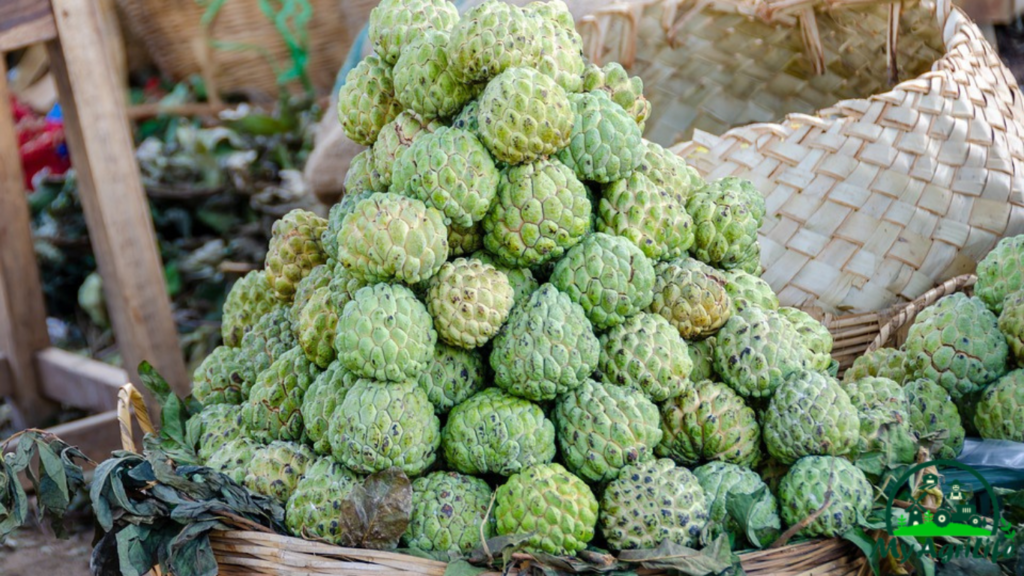
1. Temperature: Custard apples should be stored at cool temperatures, ideally between 10 and 15 degrees Celsius, to slow down ripening and extend shelf life.
2. Humidity: Custard apples should be stored in a humid environment to prevent them from drying out. A humidity level of around 85% is ideal.
3. Packaging: Custard apples should be packed carefully to prevent bruising or damage during transport and storage. Use padded trays or cartons, and wrap individual fruit in paper or plastic to protect them.
4. Ripening: Custard apples will continue to ripen after they are harvested. To ripen the fruit, place it in a warm, humid environment for a few days.
By following these recommendations, you can help ensure that your custard apple fruit is of high quality and has a long shelf life.
Conclusion
Custard apple is a delicious fruit that is usually grown in warm countries. Consumption of this fruit improves digestive health, aids in weight loss, and provides various other health benefits.








